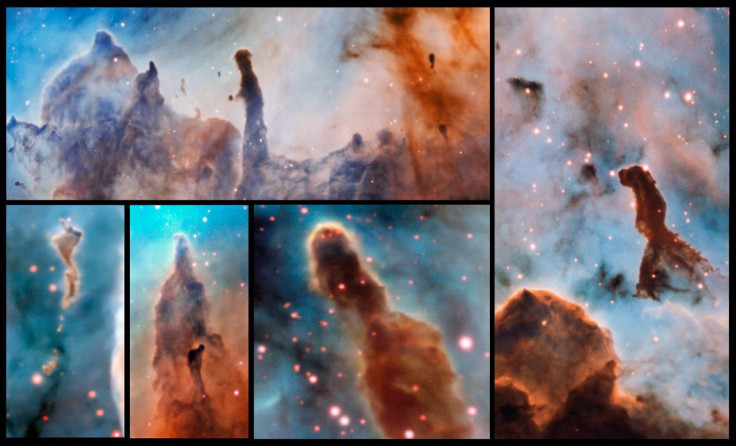‘Pillars Of Destruction’: Carina Nebula Images Give A Glimpse Of Fate That Awaits Eagle Nebula’s ‘Pillars Of Creation’

The “pillars of creation” — star-forming regions in the Eagle nebula captured by the Hubble Space Telescope in 1995 — are arguably the most famous photograph of a celestial structure ever taken by humans. The image shows three giant columns of cold gas irradiated by ultraviolet light from a cluster of young stars.

Now, a team of astronomers has captured images of similar structures in the Carina nebula located 7,500 light-years from Earth. However, as compared to their counterparts in the Eagle nebula, these vast clouds of dust and gas observed using the European Southern Observatory’s (ESO) Very Large Telescope (VLT) have earned a much more morbid moniker — the “pillars of destruction.”
The images provide observational evidence for a phenomenon known as photoevaporation, wherein high-energy radiation emitted by newly formed massive stars ionizes the surrounding gas, which eventually disperses.

This is the process that is currently taking place — or, more accurately, was taking place 7,500 years ago — in the region of Carina nebula photographed using the VLT. After observing 10 pillars, astronomers were able to establish a clear correlation between the amount of ionizing radiation being blasted out by nearby stars and the dissipation of pillars.
“This might seem like a cosmic calamity, with massive stars turning on their own creators. However the complexities of the feedback mechanisms between the stars and the pillars are poorly understood,” the ESO said in a statement accompanying the images. “These pillars might look dense, but the clouds of dust and gas which make up nebulae are actually very diffuse. It is possible that the radiation and stellar winds from massive stars actually help create denser spots within the pillars, which can then form stars.”
Even the pillars of creation in the Eagle nebula are ephemeral, and are part of an unending cycle — a nebula forms a star, the star destroys the nebula, the star dies and explodes and forms its own nebula, and the process goes on ad infinitum.
© Copyright IBTimes 2025. All rights reserved.





















